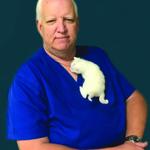If you look around your community and workplace, you will notice that many Americans are quite large and do not look healthy. The Centers for Disease Control and Prevention statistics show that 6 in 10 Americans suffer from one or more mild to severe chronic medical conditions: heart disease, cancer, diabetes, obesity and hypertension. According to the CDC, we spend $4.1 trillion annually on health care in America, 90% of which is used to treat these often-preventable diseases.
America is sick. These chronic illnesses are the consequences of smoking, lack of exercise, poor diet and continually living with stress. We are overdosed with ads for unhealthy foods, all the while being told to consume less and exercise more. Industry lobbyists have spent billions on fighting the government's attempts at restricting or banning foods and substances which are known to cause cancer, obesity and other diseases.
Our current system is based on the sick care model. There is big money in this strategy of medicine. We are bound to the need for technology and pharmaceuticals that will fix us. We spend billions on infrastructure to provide care for those who are sick. Look at your local hospitals and how they have grown in recent years.
Education is one of the best tools in both the prevention of chronic illness and the management of it. Knowledge about their disease, possible outcomes and best treatments encourages and empowers the patient to take responsibility for the care.
Wellness initiatives and education are key. It's best to teach how to prevent the disease in the first place. Emphasis should be on the value of exercise and of nutritious, whole foods as medicine for preventing and treating chronic conditions like diabetes and heart disease. There is a renewed interest in holistic health care, offering alternatives to pharmaceuticals and technology-based care.
Many stakeholders with an interest in the health of America have begun to speak out using their knowledge and research to educate on the science and best practices leading to a healthier population. One notable example is Dr. Mark Hyman, founder of The UltraWellness Center, the head of strategy and innovation of the Cleveland Clinic Center for Functional Medicine, is a leading figure in the push to educate on the value of nutritious, whole foods as medicine. He stated, “Food is the biggest cause of chronic illness and the economic burden it places on families, societies and nations.”
There are ample opportunities in New Hampshire for education and wellness. According to the NH Hospital Association, we have 31 hospitals across the Granite State. These hospitals are leaders in creating healthier communities by increasing access to care and offering financial assistance to uninsured. According to the NH Hospital Association, over $594 million is spent annually by these organizations for community health support, including a substantial amount for community education. Every hospital offers support and educational programs for the public. Many are free. A recent publication by a local hospital advertised Diabetes Day, a free community event. This publication also offered breast feeding education and support. This is just one of the many “health magazines” mailed from local and regional hospitals with educational and health screening opportunities. This type of information can also be easily accessed by the hospital’s websites.
We are fortunate to have the Concord Hospital Health System, which was recently recognized by the NRC Health Excellence Awards and given the 2025 Patient Experience Award in the small system category for exceptional care experiences. This award-winning health care system serves Central New Hampshire including Concord, Laconia, Franklin and surrounding areas. Its website offers a prominent tab for classes and events on the first page, with listings by medical topic, nutrition being one of them.
Other contributors to the health and well-being in our state are local visiting nurses and public health organizations. Many of these great organizations offer free vaccination clinics, especially during cold and flu season. There are also foot care clinics available and so much more. In our local newspaper, there was an ad recently for a free seminar on aging and preventing falls offered by an elderly care facility. Many other community organizations, including churches, sponsor education and screening opportunities, such blood pressure clinics.
Considering food as medicine, there are several food co-ops around the state that offer organic and healthy locally-grown food, as do many of our local grocery stores. We have several national chains in our state that have like-minded offerings and appear to be prospering.
It would seem, based on the numbers, the state of American health would be bleak, yet our little State of New Hampshire has invested a lot of money and resources to help reverse the trend. If we utilize what is available, there is reason to be optimistic about the state of our health.
•••
Lorretta Sikoski is a registered nurse with many years of clinical and administrative experience. She has specialized in case management and occupational health and is a lifelong resident of New Hampshire.

















(0) comments
Welcome to the discussion.
Log In
Keep it Clean. Please avoid obscene, vulgar, lewd, racist or sexually-oriented language.
PLEASE TURN OFF YOUR CAPS LOCK.
Don't Threaten. Threats of harming another person will not be tolerated.
Be Truthful. Don't knowingly lie about anyone or anything.
Be Nice. No racism, sexism or any sort of -ism that is degrading to another person.
Be Proactive. Use the 'Report' link on each comment to let us know of abusive posts.
Share with Us. We'd love to hear eyewitness accounts, the history behind an article.